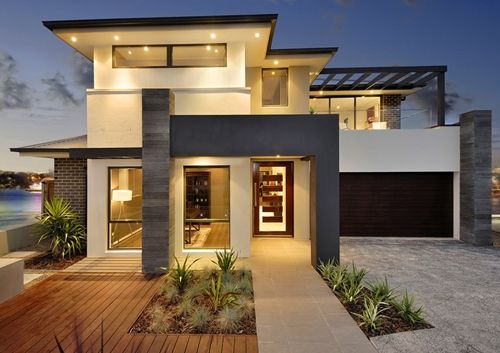What is a Flat Roof?
A flat roof is a roof that is almost level in contrast to the many types of sloped roofs. The slope of a roof is properly known as its pitch and flat roofs have up to approximately 10°.

Types of flat roofs based on material types.
- Built-Up Roof (BUR)
- EPDM (Rubber Membrane)
- Modified Bitumen
- Built-Up Roof (BUR)
Built-Up Roofing is a traditional type of flat roof that is made from hot tar, asphalt, and gravel. The roof itself is built from layers of waterproof material alternated with hot tar and ballasted by a layer of gravel. The result provides a long-lasting, highly durable waterproof membrane to give your commercial or industrial flat roof years of quality service.
- EPDM (Rubber Membrane)
Ethylene Propylene Diene Monomer (EPDM) is another common type of flat roof for commercial or industrial buildings. EPDM roofs are made from a synthetic rubber created from a combination of ethylene propylene and diene, resulting in a highly flexible, yet durable flat roof.
- Modified Bitumen
Modified Bitumen is a common type of flat roof designed for flat and low-sloped buildings. Flat roofs made from modified bitumen roofing are composed of polymer modified bitumen material and reinforced with one or more layers of fabric. This type of commercial or industrial flat roof can be installed with a variety of application methods including cold applied, heat weld, self-adhered, mechanically fastened, and hot-applied.
Benefits of a Flat Roof
- Flat Roofs Are Durable
- Simple to Construct
- Extra Space
- Repairs Are Possible
- Easy To Clean
- They’re Energy Efficient
Are you considering a flat roof over shingles or a tile roofing system? Check out the benefits below
- Flat Roofs Are Durable: A flat roof is water-resistant, so you do not have to worry about water damage. The risk of a fallout decreases in a flat roof because it can hold up against heavy winds.
- Simple to Construct: It is easy to construct a flat roof, so you do not have to worry about your contractors running into an issue with the project.
- Extra Space: You can maximize more space if you choose a flat room for your building. The extra space can be turned into rooftop gardens or a roof deck. Homeowners can use a flat roof to add a beautiful addition that also provides additional weather protection.
- Repairs Are Possible: In case of a problem with a flat roof, it is just as easy to repair the flat roof as it is to construct it. The cost to repair a flat roof is affordable compared to other roofing systems.
- Easy To Clean: A flat roof is easier to reach, which makes regular maintenance possible. Maintenance prevents stains, algae, mold, and debris from building up.
- They’re Energy Efficient: Flat roofs have a membrane system applied on top of rigid sheets of insulation. This makes them more energy-efficient than sloped ones because the absence of gaps blocks the passage of air


